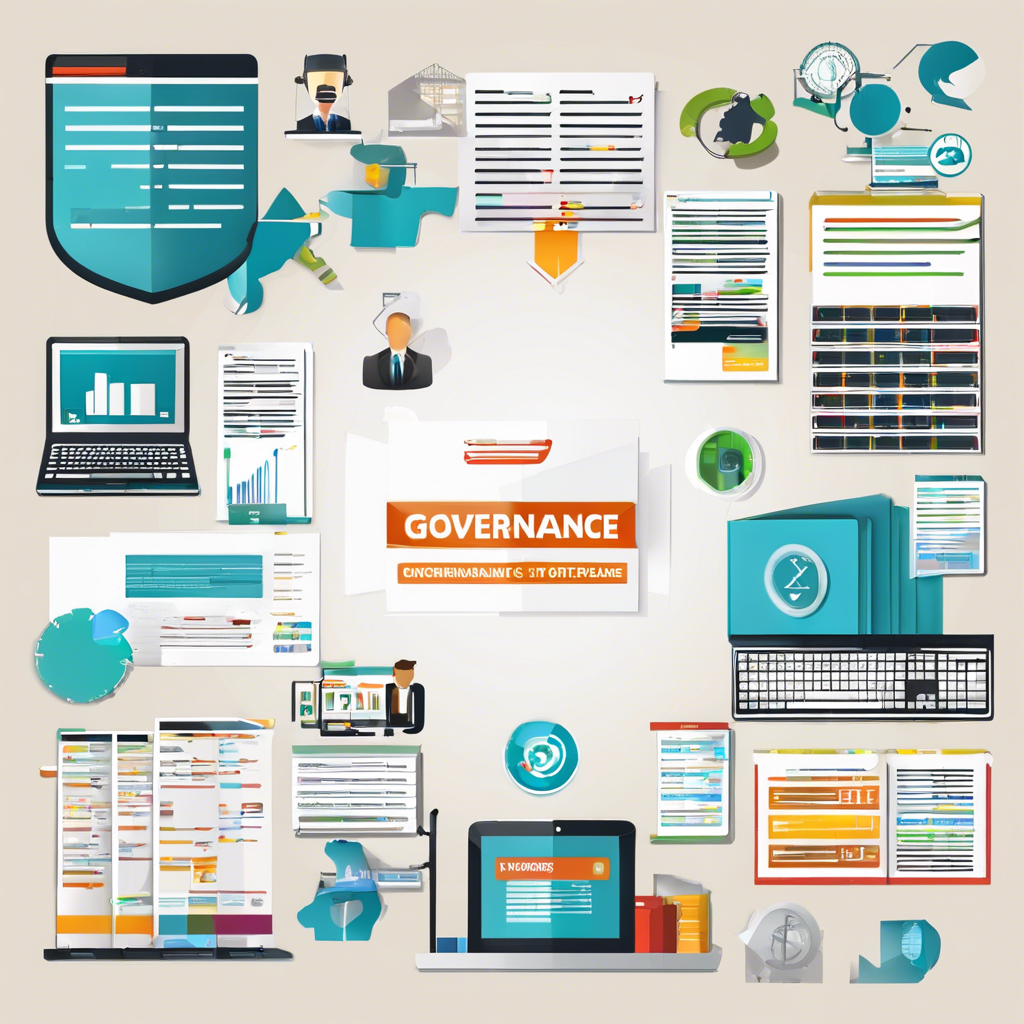IT governance software plays a crucial role in the management and oversight of information technology within organizations. In today’s digital age, where data security and compliance are top priorities for businesses, having effective IT governance software in place is essential. This software helps companies ensure that their IT systems are aligned with business objectives, meet regulatory requirements, and are secure from cyber threats.
One of the key components of IT governance software is risk management. By identifying and assessing potential risks to IT systems, organizations can proactively address vulnerabilities and prevent security breaches. IT governance software provides tools for risk assessment, mitigation, and monitoring, allowing businesses to stay ahead of emerging threats and safeguard their data.
Another important aspect of IT governance software is compliance management. With regulations such as GDPR and HIPAA imposing strict requirements on the handling of sensitive data, organizations need software that can help them demonstrate compliance with these laws. IT governance software automates compliance processes, tracks regulatory changes, and generates reports to ensure that companies are meeting legal obligations.
IT governance software also plays a role in aligning IT strategies with business goals. By providing visibility into IT assets, processes, and performance metrics, this software enables organizations to make informed decisions about technology investments and resource allocation. With IT governance software, businesses can optimize their IT infrastructure to support overall business objectives and drive growth.
In addition to risk management, compliance management, and strategic alignment, IT governance software helps organizations improve operational efficiency. By streamlining IT processes, automating routine tasks, and centralizing IT management functions, this software enables businesses to reduce costs, increase productivity, and enhance overall performance.
Furthermore, IT governance software facilitates collaboration and communication among IT teams, stakeholders, and decision-makers. With features such as workflow automation, document sharing, and real-time reporting, this software promotes transparency, accountability, and teamwork within organizations. By fostering a culture of collaboration, IT governance software helps drive innovation and continuous improvement.
Moreover, IT governance software includes tools for performance monitoring and measurement. By tracking key performance indicators (KPIs) related to IT operations, security, and compliance, organizations can assess their progress towards goals, identify areas for improvement, and make data-driven decisions. This data-driven approach enables businesses to optimize IT performance and drive operational excellence.
Additionally, IT governance software supports change management processes within organizations. By providing mechanisms for evaluating proposed changes, assessing their impact on IT systems, and managing their implementation, this software helps companies implement changes smoothly and minimize disruptions. With IT governance software, businesses can ensure that changes are aligned with business objectives and do not compromise system integrity.
Furthermore, IT governance software enhances decision-making by providing decision-makers with accurate, timely, and relevant information. With dashboards, reports, and analytics tools, this software enables executives to monitor IT performance, identify trends, and make informed decisions about technology investments and priorities. By leveraging data and insights from IT governance software, organizations can drive strategic decision-making and achieve competitive advantage.
Moreover, IT governance software supports incident management and response. In the event of a security breach, system outage, or other IT incident, this software helps organizations detect, contain, and resolve issues quickly and effectively. By providing incident tracking, escalation procedures, and response protocols, IT governance software enables businesses to minimize the impact of incidents and maintain operational continuity.
Additionally, IT governance software facilitates vendor management and procurement processes. By centralizing vendor information, tracking contract terms, and evaluating vendor performance, this software helps organizations manage vendor relationships effectively and mitigate risks associated with third-party suppliers. With IT governance software, businesses can optimize vendor selection, negotiate favorable terms, and ensure vendor compliance with contractual obligations.
Furthermore, IT governance software supports IT asset management by providing tools for tracking, inventorying, and optimizing IT hardware, software, and licenses. By maintaining accurate records of IT assets, monitoring usage and performance, and identifying opportunities for consolidation and cost savings, this software enables organizations to maximize the value of their IT investments and minimize waste.
Moreover, IT governance software includes capabilities for incident reporting and analysis. By capturing and analyzing data on security incidents, system failures, and compliance breaches, this software helps organizations identify root causes, trends, and patterns that can inform risk mitigation strategies and process improvements. Incident reporting and analysis tools in IT governance software enable businesses to learn from past incidents and strengthen their defenses against future threats.
Additionally, IT governance software supports IT service management by providing tools for managing service requests, incidents, problems, and changes. By automating service delivery processes, enforcing service level agreements (SLAs), and facilitating communication between IT teams and users, this software helps organizations deliver high-quality IT services that meet business needs and user expectations. IT service management capabilities in IT governance software enable businesses to enhance customer satisfaction and drive operational efficiency.
Furthermore, IT governance software includes features for policy management and enforcement. By centralizing IT policies, ensuring policy compliance, and monitoring policy violations, this software helps organizations establish a culture of security, compliance, and accountability. Policy management and enforcement tools in IT governance software enable businesses to define, communicate, and enforce IT policies consistently across the organization.
Moreover, IT governance software supports audit and reporting requirements by providing tools for generating audit trails, documenting compliance activities, and producing regulatory reports. By automating audit processes, tracking audit findings, and generating audit reports, this software helps organizations demonstrate compliance with regulations, standards, and best practices. Audit and reporting capabilities in IT governance software enable businesses to streamline audit processes, reduce audit costs, and mitigate compliance risks.
Additionally, IT governance software facilitates IT project management by providing tools for planning, tracking, and controlling IT projects. By defining project scope, allocating resources, managing timelines, and monitoring project progress, this software helps organizations deliver IT projects on time, within budget, and to specification. IT project management capabilities in IT governance software enable businesses to improve project outcomes, minimize risks, and enhance project delivery.
Furthermore, IT governance software includes features for knowledge management and documentation. By centralizing IT documentation, storing knowledge assets, and sharing best practices, this software helps organizations capture and leverage valuable knowledge within the organization. Knowledge management and documentation tools in IT governance software enable businesses to promote knowledge sharing, foster collaboration, and drive continuous learning and improvement.
Moreover, IT governance software supports training and awareness initiatives by providing tools for delivering training materials, tracking employee participation, and assessing training effectiveness. By promoting IT security awareness, compliance training, and best practices education, this software helps organizations build a culture of security-consciousness and competence among employees. Training and awareness capabilities in IT governance software enable businesses to enhance employee skills, reduce security risks, and foster a culture of continuous learning and improvement.
In conclusion, IT governance software plays a vital role in helping organizations manage their IT systems effectively, mitigate risks, ensure compliance, align IT strategies with business goals, improve operational efficiency, enhance decision-making, support incident management, facilitate vendor management, optimize IT asset management, strengthen security, and drive continuous improvement. By investing in IT governance software, businesses can enhance their IT capabilities, protect their data assets, and achieve competitive advantage in today’s digital landscape.

